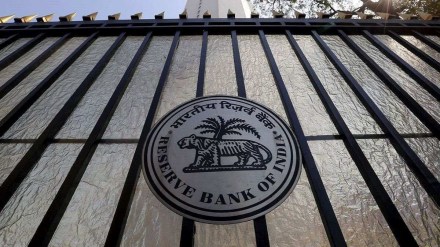The Monetary Policy Committee left the policy repo rate unchanged at 6.5% for the sixth straight meeting and stuck to its hawkish stance on Thursday, signaling that it’s in no hurry to cut interest rates. “The job is not yet finished, and we need to be vigilant about new supply shocks that may undo the progress made so far,” Reserve Bank of India (RBI) governor Shaktikanta Das said, adding the “last mile of disinflation is always the most challenging”.
Monetary policy transmission remains incomplete, Das said, implying banks haven’t fully passed on the RBI’s rate hikes to customers, while inflation still remains above the target. The uncertainty over the timing of the rate cuts and the continuation of tight liquidity environment at a time when the banking industry has been facing liquidity issues spooked the stock markets, which fell by 1%. While Das said the RBI will remain “nimble and flexible” on liquidity and that an appropriate mix of instruments will be used to adjust banking-system cash, deputy governor Michael Patra said the objective is to keep the overnight market rates close to the policy rate.
The decision to hold on to the rates was made 5-1, with external member Jayanth Verma voting against it. The MPC unanimously decided to remain focused on “withdrawal of accommodation” to ensure fuller transmission and anchoring of inflation expectations, disappointing some analysts who had predicted a shift to neutral.
The good news was that the projections of gross domestic product (GDP) for FY24 have been revised upwards to 7.3% from 7%. For FY25, it has been kept at 7%. Inflation projections, however, have been maintained at 5.4% for the current year and at 4.5% for FY25. In addition, the governor’s speech said the economy is in a sweet spot following traction in the industrial activity due to improvement in manufacturing, demand for residential housing and increased thrust on government capex.
Economists like Abheek Barua, chief economist of HDFC Bank, found the policy fairly balanced, remaining upbeat on growth and marginally bringing down its inflation forecasts. “The RBI left little room for any imminent policy pivot and therefore we do not expect rate cuts to happen before the August 2024 policy. On liquidity, the central bank seemed to suggest that deficits were broadly frictional and durable liquidity remained more comfortable,” said Barua.
Interestingly, the policy statement chose to separate the stance and liquidity conditions. The stance to continue with withdrawal of accommodation has been attributed to incomplete transmission and sticky inflation. However, the tight liquidity is being driven by exogenous factors, which is expected to correct over the foreseeable future and through market operations.
The market enthusiasm was short-lived. The Sensex, which was trading over 72,000 points at the start of the session, fell soon after Das began his policy statement. It closed at 71,428.43, down 1% or 723.57 points, with leading private sector banking stocks such as HDFC Bank, ICICI Bank, Kotak Bank and Axis Bank falling 2-3%. The 10-year bond market yield was up by 1 bps to 7.08%. The rupee closed 1 paise down at `82.96 against the dollar.
The RBI governor made several other observations during the speech. These include the volatility in the financial markets as participants have adjusted their expectations on the timing and pace of rate cuts by major central banks. The latter, on their part, have remained cautious against premature easing in their fight against inflation.
Das also cautioned against a new element of stress that is evolving globally – the high public debt of advanced economies. The global public debt-to-GDP ratio is expected to reach 100% in the next decade. “The challenges of debt sustainability in an environment of high interest rates and low growth at the global level can become new sources of stress,” he added.
Among other decisions, the bank has decided to review the regulatory framework for electronic trading platform and a revised one will be issued for feedback.
Continuing with making life easier for domestic investors taking the International Financial Services Centre (IFSC) route, it has allowed them to hedge the price of gold in the over the counter segment in the centre.
A key fact statement that includes an all-inclusive annual percentage rate of cost and recovery and grievance redressal mechanism will be provided by certain category of lenders to retail and medium and micro enterprise borrowers.
Dinesh Khara, chairman, SBI, said, “The MPC decision to hold rates and stance was expected but the set of regulatory decisions holds out a pragmatic and steadfast approach in the quest for digital robustness, customer centricity and price discovery. The decision to have a key fact statement regarding retail and MSME advances will empower customers to make informed decisions.”
The robustness of Aadhaar Enabled Payment System (AePS) is sought to be enhanced by introducing some additional fraud risk management measures. Also, for authentication of transactions, it is proposed to put in place a principle-based framework that will facilitate adoption of alternative authentication mechanisms besides the existing OTP system.
